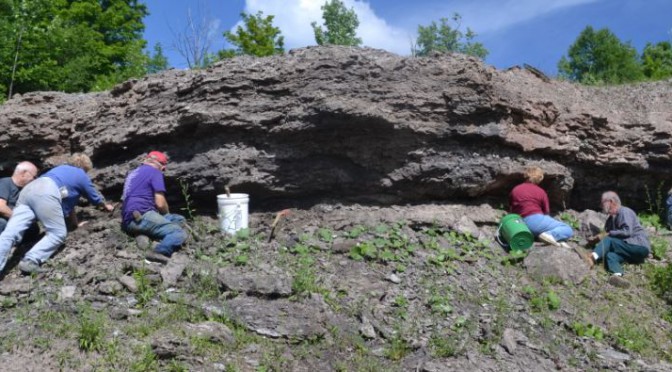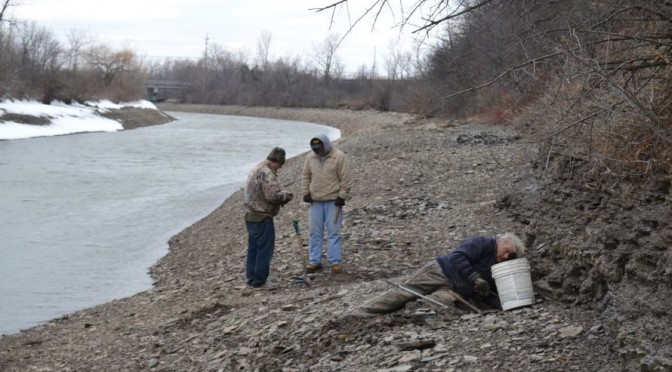
Published in the July, 2015 WCGMC News
In late June, seven of us mineral enthusiasts set out for a day of collecting near Syracuse. We concluded the trip with a successful stop in Fayetteville where we recovered selenite. The site is behind the town municipal building on Route 257. The small outcrop is not a stand alone destination, but it does makes a nice ancillary stop on a trip into the area. For us, that meant a 90 minute stop after spending several hours in Ilion Gorge (our second visit there in a month). The Fayetteville ledge is not as pretty as the Ilion location, but it was a productive stop. Continue reading Silurian Selenite near Syracuse →

An article I wrote for the April 2014 WCGMC News
The Rochester shale comprises the upper 85’-90’ of the Middle Silurian Clinton Group in upstate New York and southern Ontario. The upper two-thirds of the unit contain numerous grey limestone beds, which can be sufficiently resistant to form outcrops, but which are poor in fossil content. The lower 20’ of the Rochester shale is notoriously susceptible to erosion such that outcrop exposure is rare. Unfortunately, it is this rapidly weathering unit at the base that contains the abundant fossil assemblage (specifically trilobites) for which the formation is famous. The best visible exposure of the full Rochester shale section is in the gorge walls of High Falls on the Genesee River. However, this section is agonizingly unapproachable for fossil collection, particularly so the lower 10-20’ of section best known for fossil diversity and abundance.
Over 200 invertebrate fossil species have been identified from the Rochester shale including corals, brachiopods, bivalves, gastropods, cephalopods and crinoids. But, it is the spectacularly preserved trilobites that have attracted collectors to the Rochester shale since James Hall first detailed their occurrence in the 1840’s. The diverse fauna combined with the fine grained shale beds and thin limestone units indicate that the Rochester shale was deposited in warm, well oxygenated marine waters of intermediate depth. But where does one find outcrop to search for fossils?
Continue reading Rochester Shale – Silurian Fossils →
Retired, collecting minerals and stamps, growing flowers and vegetables, and when the spirit moves, toying with technology

